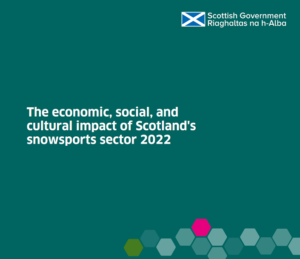 This post is a critical analysis of the latest report into the impact of snowsports commissioned by the Scottish Government which was quietly published in January (see here). The report contains some major flaws/ inaccuracies which need to be addressed and has implications for all of Scotland’s ski centres, including the three in the Cairngorms National Park, the Lecht, Glen Shee and Cairn Gorm. While Glencoe and Nevis Range are not within the National Park I have included them in my analysis because diversification, as recommended in the report, at Glencoe has helped to make it a growing force in Scottish skiing whereas at Nevis Range it has almost closed down the skiing operation.
This post is a critical analysis of the latest report into the impact of snowsports commissioned by the Scottish Government which was quietly published in January (see here). The report contains some major flaws/ inaccuracies which need to be addressed and has implications for all of Scotland’s ski centres, including the three in the Cairngorms National Park, the Lecht, Glen Shee and Cairn Gorm. While Glencoe and Nevis Range are not within the National Park I have included them in my analysis because diversification, as recommended in the report, at Glencoe has helped to make it a growing force in Scottish skiing whereas at Nevis Range it has almost closed down the skiing operation.
1. Supply of data for the report
There was limited engagement by the public, ski clubs and businesses in the production of the report which has implications for its conclusions.
For example the number of public responses to the survey undertaken by the consultants, EKOS, was1530. The SE Group report of 2018 estimated the number of snowsports participants in Scotland is 10% of an approximate population of 5.5M = 550,000! That same report, see screenshot below, quotes the Snow Factor at Braehead as having had some 500,000 people learn to ski there!

There was no mention of the sister indoor snow slope at Castleford in Yorkshire but people from England, particularly the north, ski in Scotland too!
Questions
(1) How many have learned at Hillend and all the other artificial ski slopes?
(2) How many people use the artificial slopes?
(3) Are they not classed as snowsports enthusiasts?
(4) Why is there almost nothing in the report about them after all there must be quite significant numbers who learn to ski/ board on plastic?
The number of Scottish skiers could be well in excess of 550,000.
2. Representation of data in the report
Now I will take a look at the graphs in the report, pages 31 and 63 – 65 inclusive, and show how seriously flawed they are.
From page 31:-
Report section 4 Visitor Trends:-
Figure 4-1 also shows snowsports visitor data from four of the five mountain centres.9 The chart shows a clear declining trend in numbers of visitors.
Figure 4-1: Snowsports visitor numbers by year (for four of the five mountain
centres)
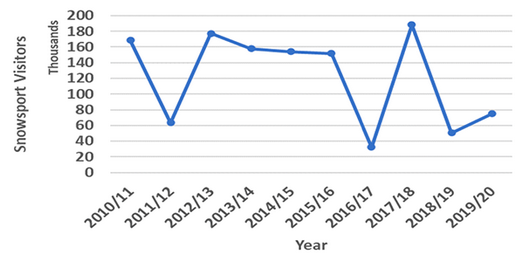

There are three years where the level of snow was particularly low, and this impacted considerably on visitor numbers (i.e. 2010/11, 2016/17 and 2018/19).
Note “9” states “Data for the years 2016/17, 2017/18, and 2018/19 was only available for four of the five mountain centres”. Furthermore, it is claimed no data is available for 2020/21, hence the chart only shows visitor numbers up to 2019/20. Note how the first statement before the graph implying ALL data was supplied by only four of the five resorts is then contradicted by note “9” above!
Strange that some of this data is only available from FOUR of the FIVE mountain centres when Alan Brattey managed to assemble a complete set of data from 2004 – 2019 for both Parkswatch (see here)and the Save The Ciste Campaign:
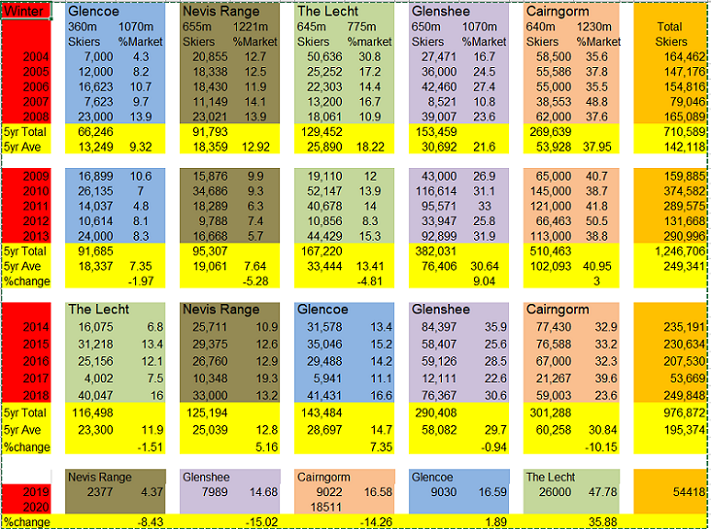
Why couldn’t the consultants do the same?
These flaws show what a nonsense the chart or graph (as it is more commonly known) actually is and therefore why it cannot be used to formulate a way forward.
Now let’s look at another two graphs from appendix A (page 63):-
Figure A-1: Snowsports Visitors (Individual Mountain Centres) – Cairngorms
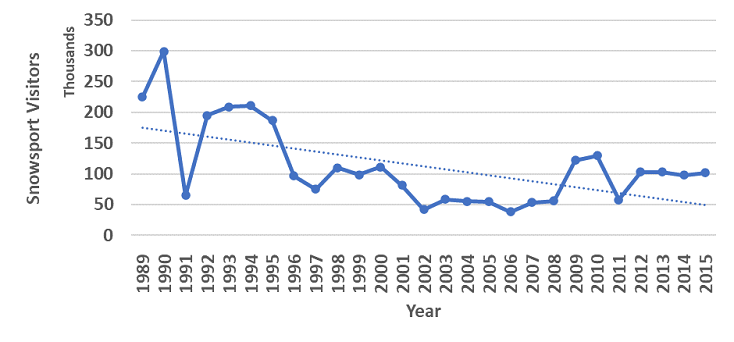
And
Figure A-2: Snowsports Visitors (Individual Mountain Centres) – Glencoe
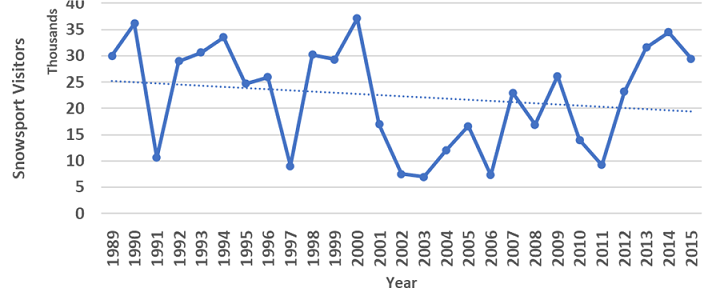
(1) Anyone from school age and upwards who has studied maths will tell you straight away that you can’t compare graphs with different scales. The “Y” axis, the vertical, is not the same on both graphs giving a false impression when comparing them. There is no indication as to the significance of the dotted line, though it seems intended to imply that the average number of skier days are falling at both resorts.
2) When the first graph (4.1 above) shows data to 2020 why has that not been carried through to the next two graphs, Figures A-1 and A-2 which end in 2015?
As a consequence of these flaws, I have reworked the Glencoe graph (blue lines) to the same scale as the one for Cairngorm (black lines), combined them using the figures published on here and by Save the Ciste and extended the timescale to the last available data 2019. I have excluded data from earlier years as it’s accuracy is questionable.
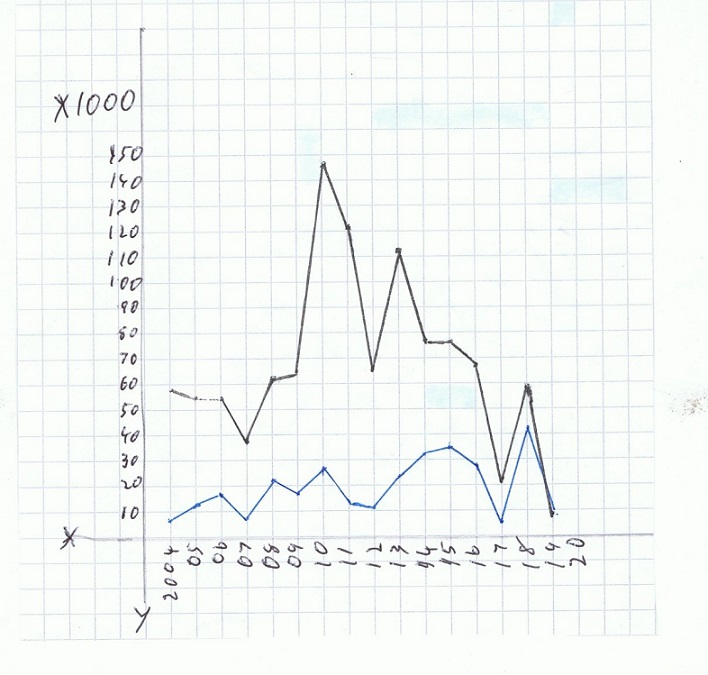
This presents a very different picture, showing that while the snowsport day numbers at Cairn Gorm are consistently falling, Glencoe is actually on the up!
To illustrate further what is going on, in the next graph I have added the data for Glenshee (red lines).
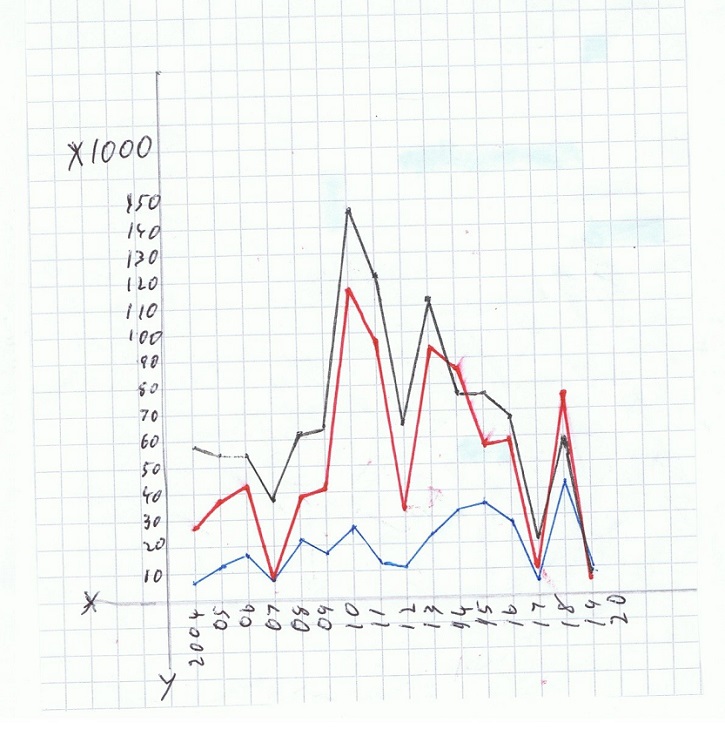
And in the next includes data for the Lecht (light blue lines) :-
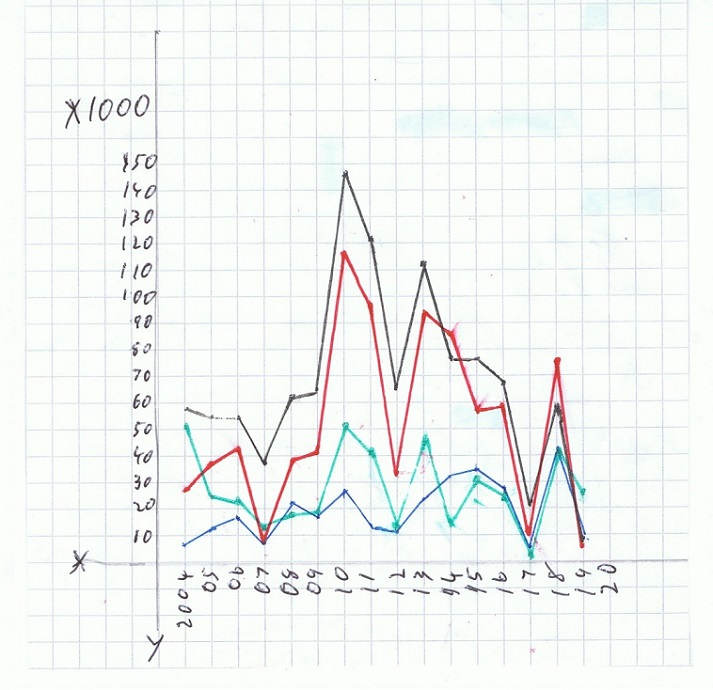
And last, but not least, Nevis Range (purple lines) :-
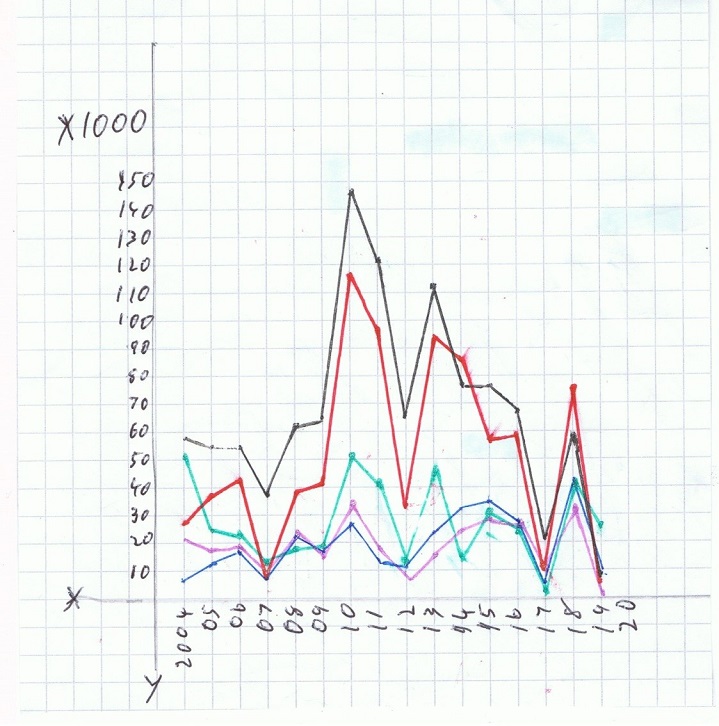
This final graph appears to reflect the link between no sports days and snowfall, e.g. in 2018 remember the Beast from the East? Glenshee that year attracted most people but because of its easterly position usually attracts fewer than Cairn Gorm, the difference probably being accounted for by its closer proximity to major centres of population and its large uplift/ piste area, enabling it to capture greater numbers on good days.
The patterns at Glencoe and Nevis range are again very similar probably due to their closeness to the western seaboard. The position of the Lecht in mid-field despite the lower altitude, is most likely due to the astute business acumen of the late Mr. James McIntosh MBE. Let’s hope its staff can carry on that legacy.
3. Finances.
The report covers funding for the ski centres while avoiding critical comment:
“Cairngorm Mountain (Scotland) Ltd (CMSL), which operates the Cairngorm centre is a wholly owned subsidiary of HIE and receives funding from HIE through submission and agreement of an annual business plan. CMSL also receive capital funding from HIE through the submission and agreement of formal business cases”.
The Lecht, Nevis Range and Glencoe also operate within the geographic area covered by HIE but do not receive revenue funding from the enterprise agency. They do, however, benefit from capital investment from HIE periodically in support of a range of capital projects.” (page 17)
The differences in funding are better explained on page 40 of EKOS’ previous report 2011;-
“The Scottish ski industry is really broken down into two types of facility – (i) The ski and activity resorts of Nevis Range and Cairngorm which have received significant levels of public funding in their development and attract a greater proportion of overnight visitors and (ii) the more commercially-managed ski centres – The Lecht, Glenshee and Glencoe, which attract mainly day visitors. The support Nevis Range and Cairngorms have received has allowed more rounded / viable businesses to be developed. Both are now able to attract summer visitors, sightseers and activity participants through diversification;”
Notice in the first paragraph that there is a failure to state explicitly that HIE has 100% funded every requirement of CML/ CM(S)L since 2008. There is an admittance however in the second paragraph that since 2010 both CM(S)L and Nevis range have had, and will continue to need, “significant levels of public funding” , i.e 100%, compared to the “more commercially managed ski centres” of Glencoe, Glenshee and the Lecht 2090.
It is also apparent that Nevis range is a consistently poor performer in the snowsports market and probably only survives because of HIE’s input and diversification at the public’s expense!
The report is silent on the unfair economic competition this creates but the Scottish Government should have an obligation to force HIE and SE to address this either by:
(a) 100% funding all the ski resorts to assist Glencoe, Glenshee and the Lecht 2090 to diversify and upgrade all current infrastructure, or,
(b) only 40% fund all the resorts as currently received by the three privately owned and better managed areas.
Option (b) of course would finish the unviable business at CM(S)L and possibly at Nevis range as well, leaving (a) as the only fair and honest way to fund Scottish skiing. Let us hope that happens but meantime congratulations and thanks should be given to the hard working staff of Glencoe, Glenshee and the Lecht for surviving in such an unfairly economic situation.
ALL RESORTS SHOULD HAVE THE SAME LEVEL OF FUNDING.
An excellent report. It is a shame on HIE that you have to expose their bias and misallocation of our public finances. Glencoe is a forward looking centre and I do appreciate the work that Nevis does with mountain biking but it is a loss to not have the braveheart chair. Cairngorm however are by far the worst. Why is nobody ever held accountable?
It is also very much to the shame of the politicians who have stood aside and allowed HIE to squander significant amounts of public money on an enterprise that has advantages over the other areas but the strategies pursued do not enable financial sustainability. The Cabinet ministers with responsibility for HIE, namely Fergus Ewing and Ivan McKee should both hang their heads in shame. The debacle was laid bare before them both but neither of them took any action.
CairnGorm could and should be financially viable i.e not require a continuous feed of funds for all capital expenditures as well as an annual operational subsidy However, that outcome will be elusive until the local Community have control and sound business principles are applied